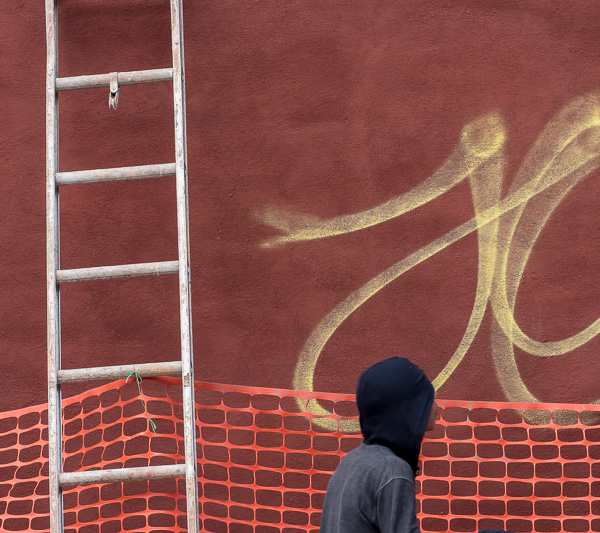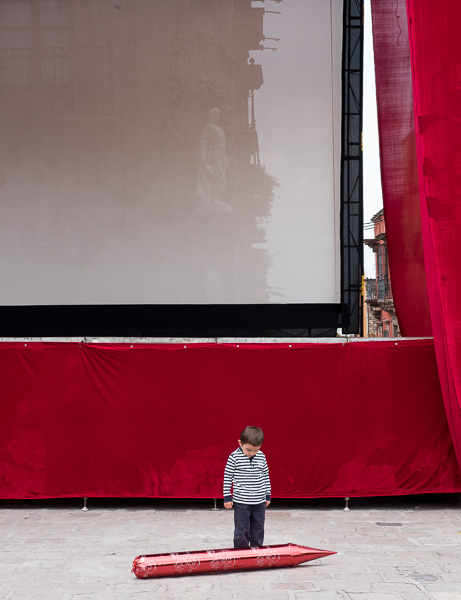By: Ray Maxwell
Introduction:
I am retired, but spent most of my career as an Electronics Engineer. During my career I built CCD based remote sensing equipment for the Canadian Center for Remote Sensing. As a boy I bought my first 35 mm camera at age ten. I became a black and white and color print maker using camera, film and a conventional darkroom. In the middle of my career I worked in the area of remote sensing designing airborne sensors (CCD based) and satellite ground stations and imaging systems. Later in my life I spent ten years doing electronic pre-press for a commercial photographer as a sideline. In the last seven years of my career, I worked as a Color Systems Engineer in the area of color science, laser half-tone proofing, inkjet proofing, and offset press testing.
The other important piece of information is that I was born and raised in Missouri. This means that I come from a long line of storytellers from the Ozark Mountains. So, if you will bare with me, from time to time, in my writings, I will resort to telling a story or two.
The first story:
Many years ago, after designing satellite ground stations for weather satellites and producing digital images using early film recorders, I met a commercial photographer who ask me to help him prepare digital files for a local commercial printer. By this time I had my own Macintosh IIcx, Photoshop, scanner, and dye-sublimation printer. I also had some early 3D ray-tracing software that would allow me to build simple rooms and then place photos of products in the rooms using Photoshop. I was sure that given my background in digital imaging, I would have no problem preparing files for a local printer.
The photographer and I made our first visit to the local printer. I asked the printer if it was possible to calibrate my scanner, monitor, and printer so I would be able to prepare files that would print accurately on his press. I fully expected that there were standard ways to specify color using digital numbers and a way to specify an acceptable tolerance for the accuracy to which I would need to work. The head of the pre-press department informed me that we should bring in our transparencies and he would scan them and do the separations and that there was no way I could do this kind of work out of my basement. I then explained to him that we were using 3D ray-tracing software to create part of our images and then combining the photos we took in Photoshop. I explained that there were no films that contained the composite images. He suggested that I print out the composite images with my dye-sublimation printer and then he would scan the result. I argued that I did not want to loose quality from a second-generation image and saw no reason why I should not be able to bring him a first generation digital file. All I needed was some information about how to calibrate my equipment to match his equipment. He thought about it for a while and brought me a CMYK process color swatch book that he had printed. This book contains color swatches made up of different combinations of CMYK values. The digital values were printed beside each color swatch. The only way he could communicate a color was to show me a swatch. He had no way to digitally specify a color or tolerance it. I had to depend on getting back a physical proof to confirm what colors would be printed.
This was my introduction to how color was handled by the printing industry. I was dumbfounded. I had worked with many manufacturing processes in my career and all of them had objective standards that specified how to measure and tolerance the manufacture of a product. In the printing industry there was no way to specify and tolerance a color using numbers. You could send in a file, but you had to depend on getting a proof back before you knew what color was going to be produced. This got me interested in understanding color science and finding a way to bring modern manufacturing methods to the printing industry. I spent the next ten years studying color science, preparing files for the commercial photographer and working with local printers. I later worked for seven years at a high-tech company that made pre-press equipment, proofing equipment and software for the printing industry.
What did I learn after studying 17 years in the industry?
1. Most printers used densitometers to do some process control.
2. Densitometers are very inaccurate and they do not measure color.
3. It takes a spectrophotometer to measure color.
4. CIELab is a model of human color perception.
5. If you are exchanging density or CIELab measurements with another color laboratory you must have a calibrated spectrophotometer. You also must have traceable calibration standards. You must understand instrument metrology. (How to test your instrument and compare its’ measurements with other instruments and standards.)
6. Color science is far, far more complex than I ever dreamed. You are trying to make objective physical measurements and translate them through the CIELab model to human perception.
7. Color only exists in the human brain.
8. People don’t see color matches made with pigments with different spectral properties the same. There is a large variation in human perception among people who are not colorblind.
9. The companies that make color media (film, laminate proofs, color printing paper) all have a color laboratory with color scientists who use spectrophotometers, calibration standards, practice instrument metrology, and understand statistical process control. These people were the ones that controlled the color produced in photographic film, paper and laminate proofs in the printing and photography industry.
10. The people that worked in these laboratories shared with me that, “It is more important that the media be consistent and produce pleasing color than producing accurate color.”
The next story:
I was working with a fellow employee at the high-tech pre-press equipment manufacture. This fellow had spent more than 30 years in the printing industry and was our commercial printing expert. He was very good at telling us how things had been done in the past and predicting how the industry would react to new technology that we were working on.
This fellow approached me one day and said, “Ray, the printing industry has been printing beautiful color for many, many years. So, what is the problem that ICC color management is trying to solve.” He also commented, “I think color management is a solution looking for a problem.”
My answer to his question:
There are several problems that have appeared and created problems for the printing industry and the photographic industry.
One of the first problems was the invention of CTP (computer to plate) systems. When CTP came along it allowed you to convert a digital file directly into a printing plate with no litho film. Before this time a printer made a litho film in an image setter and then made a laminate proof and a plate from the film. Laminate proofs such as Matchprint, Fujipoof, Waterproof, and others were the standards that everyone adjusted their presses color to match. With the advent of CTP there was no litho film and consequently, you could not make a laminate proof.
I worked on this problem for five years. I worked with a team that invented a laser half-tone imaging system that would image both plates and special laminate proofing media. This allowed you to make both plates and proofs from the same machine. My job was to work with the media manufactures to measure the consistency and color accuracy of the entire proofing system. This system produced a very good half-tone color proof. However, when I was working on this system the media for one 20” x 30” proof cost about $70. It also took about 20 minutes to image the four layers of the proof and required manual lamination to the paper in a separate machine. The machine that made both proofs and plates cost about $500,000.
During this time inkjet printers were getting better and better. There was already a very well recognized high tech ink jet system being used for proofing by the printing industry. The company I worked for bought the company that manufactured this ink jet system and moved it to where I was working. This system was sold with a very high quality RIP with a very fine color management system.
Next, Epson was making much lower cost professional ink jet printers and it was obvious that they were going to reach a level soon that many, but not all, printers would believe were “good enough”.
At this point I started work on making profiles for a RIP for these Epson printers to produce a low cost, out of the box, proofing solution.
When we were making the half-tone laser imaging system the media manufactures used the same pigments in the laminate proofs that were used on press. So it was possible to get very good color matches with nothing by dot-gain adjustments. The color gamut of the proof was exactly the same as the press.
When the industry started demanding lower cost ink jet solutions there was a new problem. The pigments that were used for press and laminate proof did not work well at all in any inkjet printer. You had to use different pigments that produced color gamuts that were as large or larger than those used on press. This then requires full color management in order to get the ink jet printer to emulate the color space of the press or laminate proof.
When you have to keep an ink jet printer calibrated in your print shop, you need a spectrophotometer and the knowledge as to how to use it and understand what the measurements mean. This is a new skill set in the printing industry.
OK, what about photography?
Well, the next thing to come along was the digital camera. Ever since I had done digital imaging in the satellite ground stations, I had dreamed of having a complete all digital photography system for my own use. The company that I worked for also ended up owning a company that made a 22 mega pixel digital back for medium format cameras. Through the company, I was able to get my hands on one of these backs for my Hasselbald 500 series cameras. I was also able to purchase an Epson 4000 printer at that time. I now had my fully digital photo system that could produce salon quality 16” by 20” prints.
So what did I learn about digital photography?
1. A film camera can output a transparency. The color is controlled by the film manufacture. A digital camera outputs a digital file full of numbers. Those numbers do not become color until you image them on a monitor or printer.
2. Inside the digital camera there is RAW output from the sensor. The color that it produces is controlled by a processor that converts it from RAW to some standard color space and then is mapped to an output device like a monitor or printer.
3. The good news is you can adjust everything. You should think of a RAW file as a latent image on film. You can control the development, the gamma, the color gamut, the tonal mapping. You can emulate almost any film or create a whole new look. You can get either pleasing color or fairly accurate color.
4. The bad news is you can adjust everything. To get what you want requires a considerable amount of new knowledge and skill.
5. A digital camera or scanner does not have a color gamut.
6. There is no such thing as “Push button color”. Color in the final analysis is a subjective experience in our brains and we all don’t see it alike. The best we can hope for out of a color management system is that it be consistent.
What is the state of the art today?
Color management is required to map color from one device to another.
It is essential to have international standards for measurement and tolerance of color.
The requirement for accurate control of the manufacturing of color has moved from the media manufactures to the end user.
The current CIELab model and ICC profile standard are not perfect, but a lot of progress has been made in the past ten years.
New color management software is becoming better and better and incorporating more of the expertise of a color guru in the software.
Color measurement instruments are getting better and less expensive.
This last week I found out that the magazine printing industry is about to adopt the first printing standards in North America that use objective color measurement standards. The next release of SWOP (Specifications for Web Offset Publications) will use CIELab measurements. I dreamed of this while I was working in the industry.
Conclusion:
I have attempted to give a high level overview of why color management is needed. With the advent of full control of color put in the hands of the end user it has also moved the responsibility for consistent color from the media manufacture to the end user. This requires that the end user have much more knowledge about color than in the past. In future articles I hope to take some of the points mentioned in this article and explain them in more depth.
© 2006,Ray Maxwel
Read this story and all the best stories on The Luminous Landscape
The author has made this story available to Luminous Landscape members only. Upgrade to get instant access to this story and other benefits available only to members.
Why choose us?
Luminous-Landscape is a membership site. Our website contains over 5300 articles on almost every topic, camera, lens and printer you can imagine. Our membership model is simple, just $2 a month ($24.00 USD a year). This $24 gains you access to a wealth of information including all our past and future video tutorials on such topics as Lightroom, Capture One, Printing, file management and dozens of interviews and travel videos.
- New Articles every few days
- All original content found nowhere else on the web
- No Pop Up Google Sense ads – Our advertisers are photo related
- Download/stream video to any device
- NEW videos monthly
- Top well-known photographer contributors
- Posts from industry leaders
- Speciality Photography Workshops
- Mobile device scalable
- Exclusive video interviews
- Special vendor offers for members
- Hands On Product reviews
- FREE – User Forum. One of the most read user forums on the internet
- Access to our community Buy and Sell pages; for members only.














